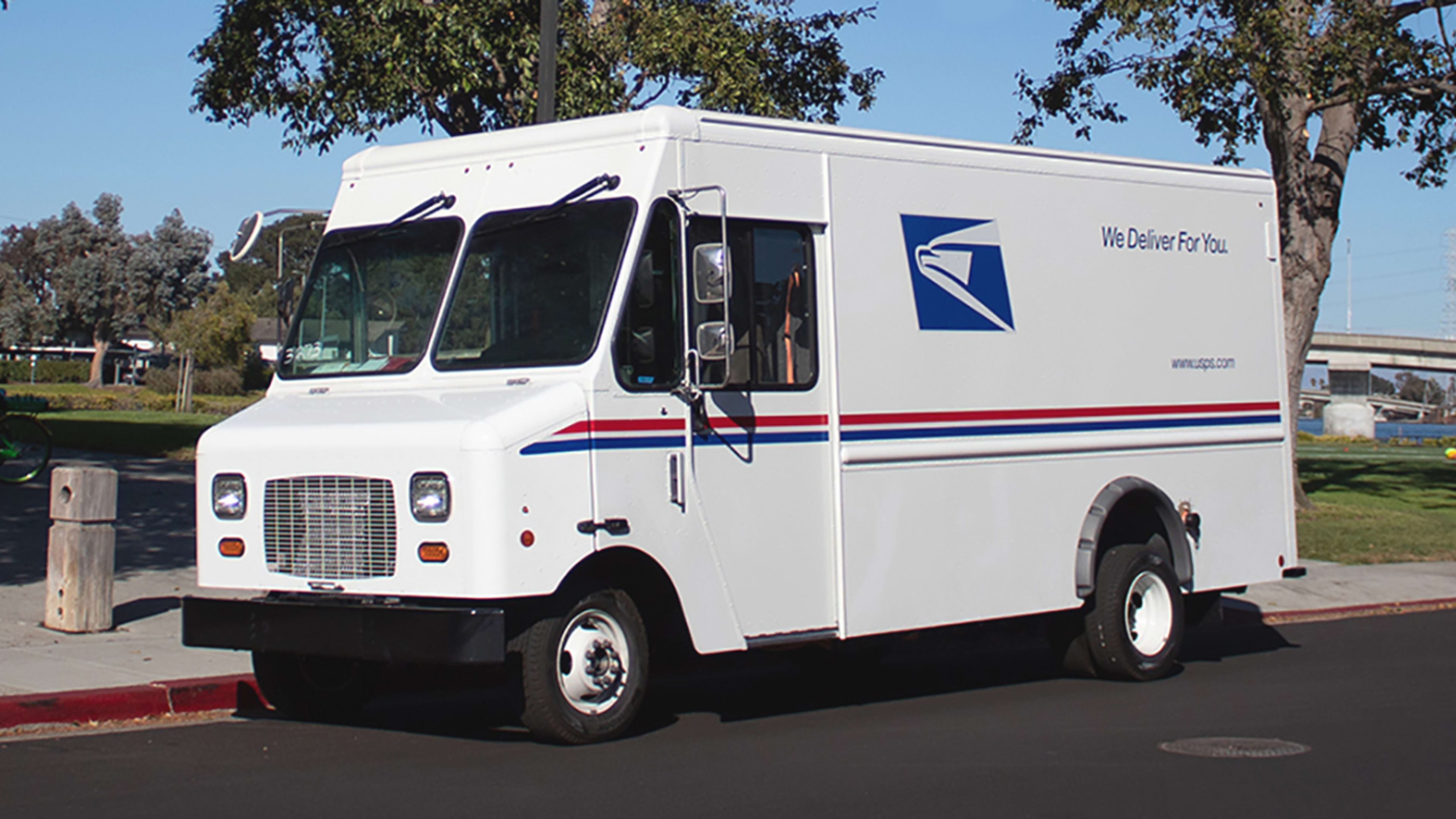A new USPS truck on the road in Fresno, California, looks like a typical large urban mail truck, but it definitely sounds quieter. That’s because the truck is 100% electric. It’s part of a new pilot that will help the postal agency test the benefits of EVs in one of the most polluted parts of the country.
Electric trucks aren’t new for the agency, which first tested an electric vehicle in 1899. In 2001, USPS started using some electric trucks in New York City. (It uses other alternative-fuel vehicles, including some that run on ethanol, elsewhere.) But it’s only now that it’s becoming more likely that the organization could begin to make a bigger shift in its whole 200,000-truck fleet.
“I think that if you look at kind of why is now maybe an inflection point for the USPS–and for other fleets in adoption of electric–it’s because battery prices are coming down so substantially and the reliability and quality is going up so quickly, thanks to passenger EV adoption,” says Jim Castelaz, CEO of Motiv Power Systems, the California-based company that designed the electric chassis inside seven new vehicles in the USPS pilot. The pilot will eventually test 15 vehicles in total in both Fresno and Stockton, cities known for their terrible air quality.
Inside a standard USPS two-ton truck–a vehicle commonly used in cities, but bigger than the mail trucks that typically drive through some neighborhoods–Motiv replaced the usual gas chassis with one that is all-electric. The company supplies the same technology for use in electric school buses and shuttles. At the garage where the mail trucks park at night, new electric chargers are being installed. “When the driver is done with his shift, he plugs in the vehicle,” Castelaz says. “The next morning, he unplugs it and it’s ready to go.”
California Climate Investments, a state program that uses cap-and-trade dollars to cut emissions, particularly in disadvantaged areas like the state’s Central Valley, funded the purchase of the trucks. The upfront cost is higher than a typical mail truck–but the operating cost of the trucks should be far lower. USPS has calculated that it can save between $4,000-$6,000 per truck each year by switching from fuel to electric charging, Castelaz says. Each vehicle will also cut around 37 metric tons of greenhouse gas emissions in a year. In California alone, if all of the mail trucks of this size became electric, it could eliminate around 47,500 metric tons of emissions each year.
For the last few years, USPS has also been evaluating new vehicles–including fully electric options–for a much larger rollout, though it’s not clear what the fate of the program will be under the Trump administration (a USPS spokesperson did not respond in time for this article). But the new pilot should help build more evidence for the fact that the struggling agency can save money, and significant emissions, by making the shift. “I think the economics and the reliability and the operational integration of the vehicles will prove to be very compelling,” says Castelaz. “I think that this will be a pilot that’s of interest to the larger USPS fleets.”
Recognize your brand’s excellence by applying to this year’s Brands That Matter Awards before the early-rate deadline, May 3.
